By Helinä Poutamo, IUFRO and IFSA
PDF for download
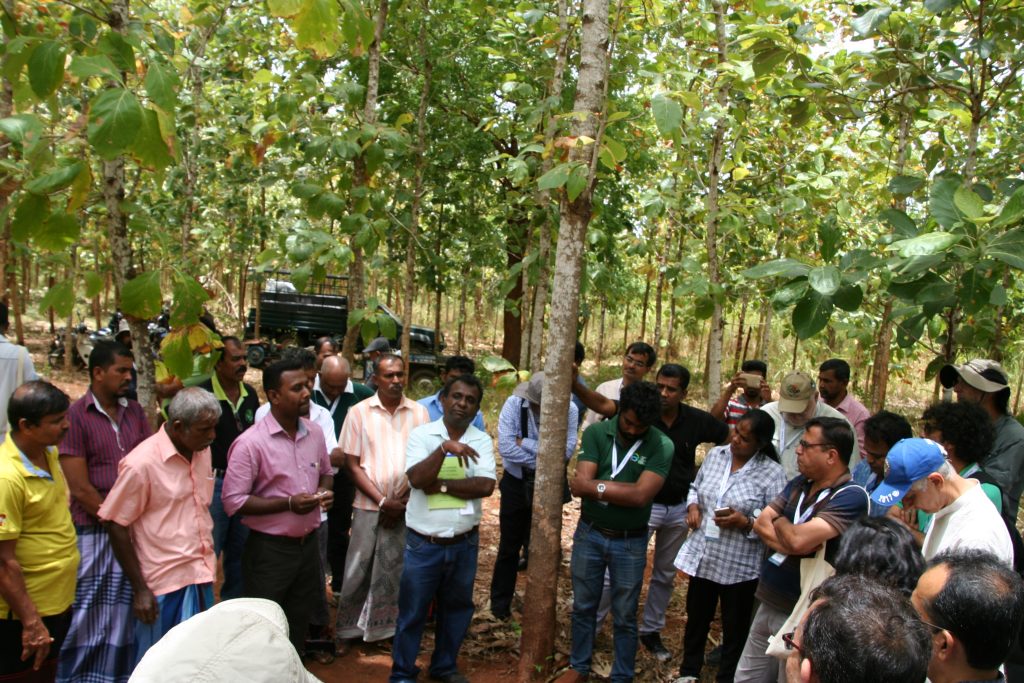
Community members and representatives of the Sri Lanka Forest Department share their experience with community-based agroforestry teak plantations using the taungya system–a form of agroforestry system in which short term crops are grown in the early years of the plantation of a woody perennials species in order to utilize the land, control weeds, reduce establishment costs, generate early income and stimulate the development of the woody perennials species. Photo © IUFRO 2018.
Read more…
PDF for download
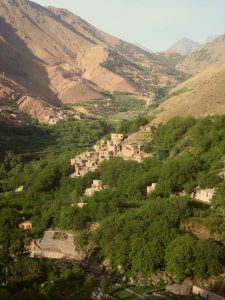
Integration of Western and Traditional knowledge in FLR planning and implementation can result in more comprehensive, locally grounded, and socially and culturally acceptable restoration projects. This scene from the Ilmil Valley in the Atlas Mountains (Morocco) depicts a mosaic of agricultural and forest management practices used by farmers to support their livelihoods and food security while conserving forest biodiversity. Photo: John Parrotta
Much has been written about forest landscape restoration (FLR) from a silvicultural or ecological perspective: techniques, approaches, methods, case studies, have all tended to focus on the practical and technical tools to implement forest restoration. However, relatively little attention has been given to human dimensions.
In fact, there is limited guidance on how to go about restoring forest landscapes when it comes to integrating both ecological and human dimensions of FLR. The need for this integration was the main motivation for the newly published book entitled Forest Landscape Restoration: Integrated Approaches to Support Effective Implementation, which was edited by Stephanie Mansourian (Consultant, member of IUFRO Task Force Forest Adaptation and Restoration under Global Change, and Research Associate, University of Geneva, Switzerland), and John Parrotta (US Forest Service and IUFRO Vice-President). Read more…
PDF for download
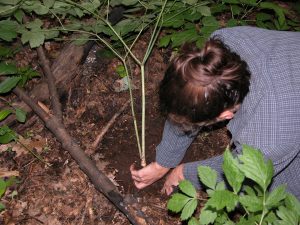
The roots of many forest plants are harvested for their medicinal values. Changes in climate and lack of management may imperil their long-term sustainability and the people who depend on them. Photo credit: James Chamberlain, USDA Forest Service.
The Forest Service of the U.S. Department of Agriculture has recently published “…the most comprehensive assessment covering the production and management of non-timber forest products (NTFPs) and resources – as well as the cultural, social, economic, and policy dynamics that affect them.” The assessment covers every state in the U.S.
But the findings can be utilized far beyond the U.S. borders. Read more…
PDF for download
Ancient woodlands, trees and forests are at the very core of many global landscapes. However, understanding the resource which these living landscapes provide requires genuinely multi-disciplinary research.
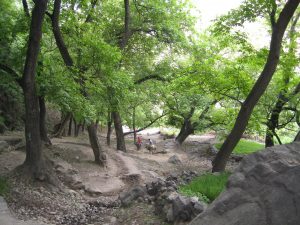 Consequently, the book “Ancient Woodlands and Trees: A Guide for Landscape Planners and Forest Managers”, which was recently published as IUFRO World Series 37, has gathered contributions by leading experts in ecology, history, heritage, and management of ancient trees, ancient woodlands and forests. Taking trees, woods and forests as eco-cultural resources, the authors explore ecology and nature, history, tradition and heritage, and the evidence base of archaeology, literature, and archives. Read more…
Consequently, the book “Ancient Woodlands and Trees: A Guide for Landscape Planners and Forest Managers”, which was recently published as IUFRO World Series 37, has gathered contributions by leading experts in ecology, history, heritage, and management of ancient trees, ancient woodlands and forests. Taking trees, woods and forests as eco-cultural resources, the authors explore ecology and nature, history, tradition and heritage, and the evidence base of archaeology, literature, and archives. Read more…
PDF for download

Regeneration is also covered by indicators for SFM. Photo: S. Linser.
Sparked in part by the Rio Earth Summit of 1992, the use of criteria and indicators (C&I) for sustainable forest management (SFM) has become an ever more present aspect of forest management.
Since that ’92 summit, “the focus of academic attention has been mainly on global forest governance with a research gap regarding regional (or international) forest related processes,” said Dr. Stefanie Linser of the European Forest Institute, who is also co-ordinator of IUFRO Working Party 9.01.05 on research and development of indicators for SFM. Read more…
PDF for download

The new living structures are the result of the re-elaboration of the old ones. Soil plays the main role in the process. So, humans who endanger life on our planet express a severe disagreement with a natural harmony that risks triggering negative feedback for the species. This always occurs to other species, why shouldn’t it happen to us? In: Zanella et al., 2018. Humusica 1, article 1: Essential bases – Vocabulary. Applied Soil Ecology, 122 (Part a), pp. 10–21.
Most people think of soil simply as something that grass, trees and other plants grow in and on.
But nothing could be further from the truth, says Dr. Augusto Zanella. Below in quotes, some key concepts gathered during an IUFRO Spotlight interview.
“Soils – in the forest and elsewhere – involve and affect ‘normal life’. They modify the air we breathe, they influence the climate, impact the food we eat and the water we drink”.
“Soil is not a substrate or a source of nutrients. It is a living matrix that sustains the functioning of every ecosystem”.
“It works like an efficient bank. It capitalizes energy and nutrients to be delivered for building and sustaining more complex and efficient ecosystems. It is a source of new materials, continuously generated from biodegradation and re-elaboration of dead structures”. Read more…
Chilaw, Sri Lanka, 15-17 August 2018
As follow-up to the 2017 consultations in India, the Ministry of Mahaweli Development and Environment, Sri Lanka, in cooperation with the International Union of Forest Research Organizations (IUFRO) organised a knowledge-sharing workshop on best practices in implementing forest landscape restoration (FLR) in South Asian countries. Around 60 experts contributed to the workshop, including partners from governmental and non-governmental institutions in Bangladesh, India, Nepal, Pakistan and Sri Lanka as well as international expert organisations of the Global Partnership on Forest and Landscape Restoration (GPFLR) such as FAO, IUCN, TROPENBOS and CIFOR.
Generous funding for the workshop was provided by the German Federal Ministry for the Environment, Nature Conservation and Nuclear Safety; The Global Environment Facility; National Institute of Forest Science, Republic of Korea; and the United States Forest Service.
Read more…
PDF for download
A newly published study entitled Sustainable Forest Operations (SFO): A new paradigm in a changing world and climate, indicates that “climate change, as well as the increasing demand for forest products, requires a rethinking of forest operations in terms of sustainability.”
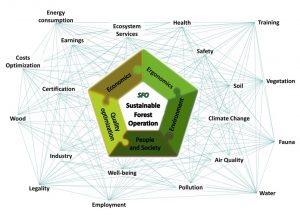
The complex system of relationships involved in the SFO concept and its five performance areas including: Economics; ergonomics; environment; quality optimization; and people and society. (Credit: Enrico Marchi, Florence University, Italy)
The study suggests that the SFO concept provides integrated perspectives and approaches to effectively address ongoing and foreseeable challenges while balancing forest operations performance across economic, environmental and social sustainability objectives.
This new concept emphasizes that forest workers’ ergonomics, health and safety, and utilization efficiency and waste management are additional key elements that enrich the understanding of the sustainability in SFO.
In addition, through the promotion of afforestation and reforestation, improved forest management, and green building and furnishing, the SFO concept further emphasizes the role of wood as a renewable and environmentally friendly material. Read more…
PDF for download
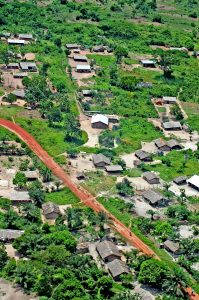
Conservation provides employment for local inhabitants at Dzanga Ndoki National Park, Central African Republic. ©Peter Prokosch, http://www.grida.no/resources/1516
Many centuries ago, a Greek philosopher noted that change is the only constant in life.
And change is brought about, in many instances, through discourse.
Discourse has been described in part as: “an ensemble of ideas, concepts and categories through which meaning is given to social and physical phenomena…”
According to this definition, discourse refers to a particular set of related ideas, which are shared, debated and communicated using different formats.
Through various discourses, we can discover fresh information and be introduced to new and different perspectives. We are able to gain experience and insight. As a result, our thinking, our attitudes, and our approaches toward various issues can evolve and change.
Certainly the ways in which forests are viewed, managed and developed have changed as the discourses concerning them have evolved. Read more…
NOTE: This text is reblogged from a blog coauthored by Vincent Gitz (FTA) and IUFRO Vice-President John Parrotta about Session 16 on “The Role of Science and Research” at the Halting Deforestation conference: http://foreststreesagroforestry.org/the-power-of-science-to-halt-deforestation/
**********************************************

A coffee plantation is pictured on a hillside in Lampung, Indonesia. Photo by U. Ifansasti/CIFOR
Science and research can offer significant contributions to halting deforestation and increasing the area of healthy forests around the world in a sustainable manner.
With halting and reversing deforestation seen as key to achieving the Sustainable Development Goals (SDGs) and the objectives of the Paris agreement on climate change, the Collaborative Partnership on Forests organized from Feb. 20-22 the conference “Working across sectors to halt deforestation and increase forest area” in Rome, to discuss ways of meeting these targets in the coming years with various actors and stakeholders. Read more…




 Consequently, the book “Ancient Woodlands and Trees: A Guide for Landscape Planners and Forest Managers”, which was recently published as IUFRO World Series 37, has gathered contributions by leading experts in ecology, history, heritage, and management of ancient trees, ancient woodlands and forests. Taking trees, woods and forests as eco-cultural resources, the authors explore ecology and nature, history, tradition and heritage, and the evidence base of archaeology, literature, and archives.
Consequently, the book “Ancient Woodlands and Trees: A Guide for Landscape Planners and Forest Managers”, which was recently published as IUFRO World Series 37, has gathered contributions by leading experts in ecology, history, heritage, and management of ancient trees, ancient woodlands and forests. Taking trees, woods and forests as eco-cultural resources, the authors explore ecology and nature, history, tradition and heritage, and the evidence base of archaeology, literature, and archives. 



